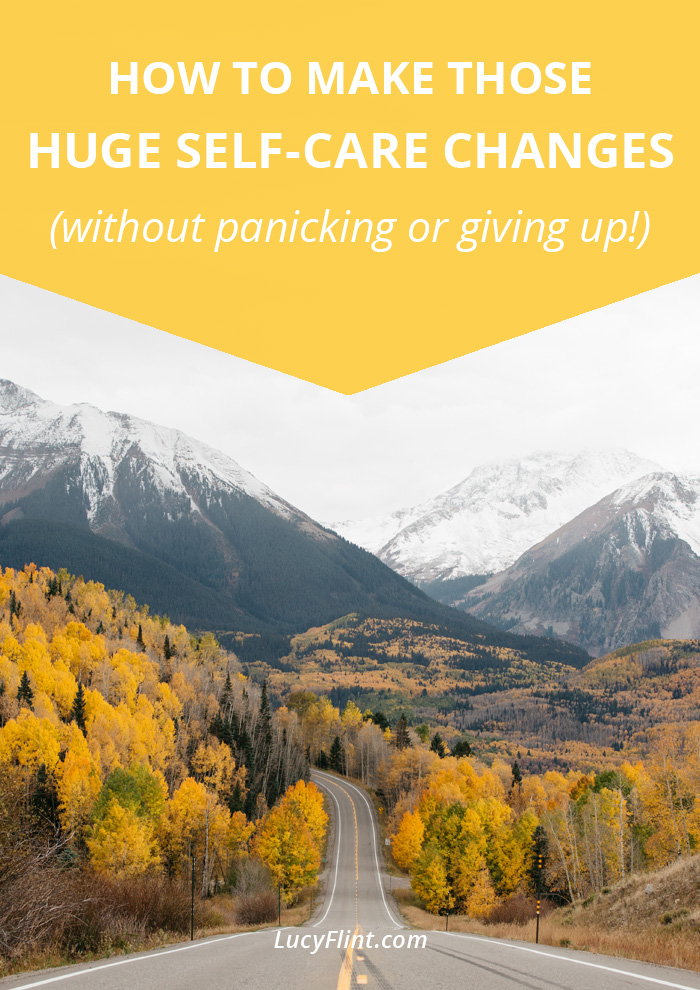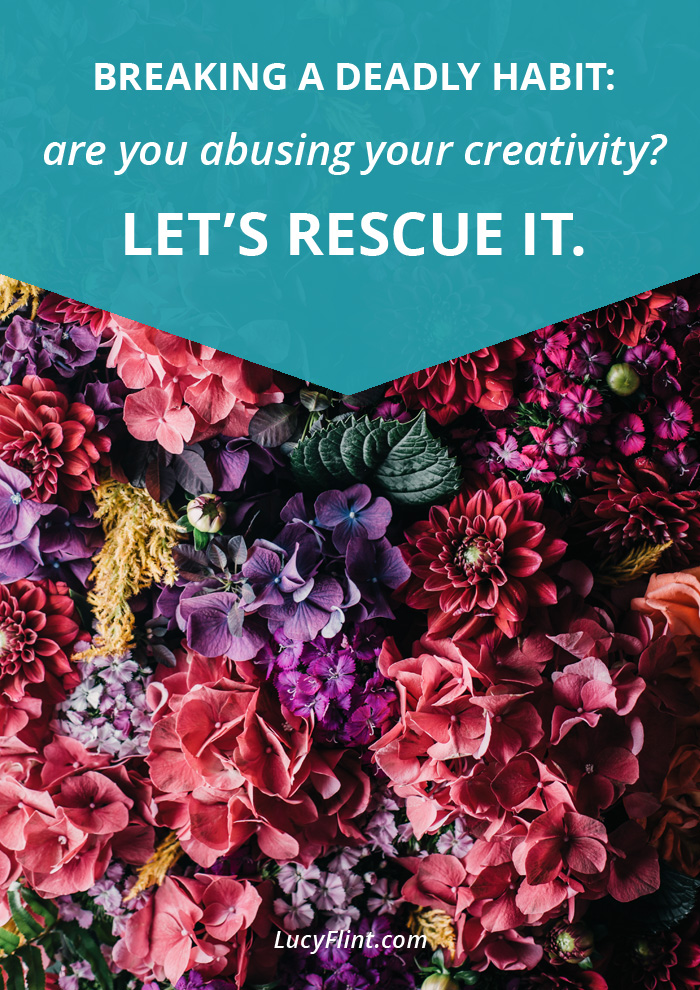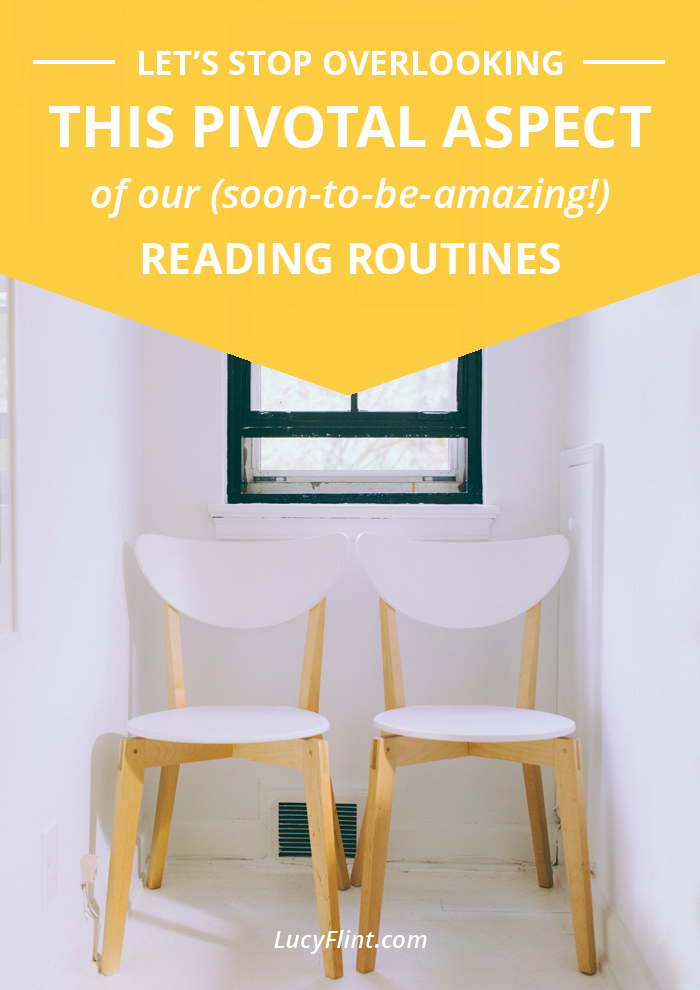A Mini Makeover for Your Creative Process: 3 Tweaks to Lighten Your Load
/One of the places where I am always working to improve my writing life is in the area of process.
I'm convinced that a healthy writing process is central to a healthy writing life—I mean, it's everything, right?
So it's worth it to me to keep checking in with my attitude toward my creative process. And, for good measure, I want to keep streamlining the actual work of my writing process as well.
What I'm doing and how I'm feeling about it: let's just keep making that better. You with me?
Today I'm super excited, because my whole perspective on the writing/drafting process is getting a makeover, thanks to a handful of brilliant teachers.
Who, by the way, have been teaching me how to paint and draw and doodle—not write.
I'm a big fan of learning from other disciplines—it's a great way to find those blind spots that develop when we're only listening to other writers about writerly struggles. I love a good commiseration session, but I also want more tools in my process-mending toolkit.
So, getting an inside look at the creative process from the perspective of some confident, capable, stunning visual artists, whom I totally admire? Yes please!
Because their view on process is awesome. And OH SO helpful, for anyone who is recovering from perfectionism, and who is trying to be kinder on herself when it comes to the stuff in her draft that she doesn't like.
Is that you too? Because that's totally me!
Here's the story: at the end of August I got a subscription to CreativeBug for my birthday.
(Which, if you're interested at all, I totally recommend. You get access to sooooo many good classes—I'm in heaven! And even if you don't want to spring for classes, check out CBTV, where they have a bunch of interviews with artists and makers under the "Meet Our Instructors" heading—super inspiring!)
So, I've been spending more and more of my downtime lately making art—surrounded by paintbrushes and watercolors and acrylics and sketchbooks and a smidge of collage-work because hey, why not.
I've been learning from amazing artists like Pam Garrison, Lisa Congdon, Heather Ross, Flora Bowley, and Yao Cheng, and as they're teaching me art, I'm also scribbling notes to myself to think about writing in a new way.
Because I wanna be aware of composition and quirkiness the way that Lisa Congdon is. I want to encounter the inevitable imperfections in my work in the same way that Pam Garrison and Yao Cheng do. And I want to approach drafts the same way Flora Bowley approaches layers of a painting.
Here's how I'm applying three art ideas to my writing process right this second.
1. Think in terms of the overall composition.
One of the things I've caught myself doing in this draft is focusing too closely on certain story elements. Writing too dang much about something. (Who, me?? Haha!)
I've especially been doing this with characters. When I bring in a new secondary character, I want to make sure they're thoroughly imagined, with a rich backstory and a fantastic inner conflict and a clear sense of what they're fighting for. And then I want that information to find its way onto the page in glimmers and side notes, to give the story so much more depth, more for readers to discover.
It can sound like a good goal, but ... every single character?
As I've been rereading my draft, I'm realizing that, when every character gets that level of attention, as a reader, I don't know who to pay the most attention to.
I don't know whose story it is, and I don't know how to keep track of everything. The plot starts stringing out, the main conflict starts to blur, and the most important characters get drowned out by a flood of other—interesting—characters.
I felt a bit helpless at first. Because I worked on those fascinating characters, and I love reading books that are bursting with interesting people. But my story was bogging down—what to do?
And then I remembered the whole concept of composition in a piece of artwork. And how all my wonderful CreativeBug teachers say again and again: step back and get a sense of the piece as a whole.
How do the colors and shapes play off of each other? Are there enough bright spots? Dark spots? Where does your eye go?
It doesn't have to be ruler-perfect symmetrical, not by a long shot. Quirkiness is welcome. Interest is your BFF.
But also: is there a kind of balance? Is there a place for your eye to rest, patches where there isn't so much going on? Is there negative space?
Thinking of my story the same way I would a sketchbook spread or a canvas has been so helpful.
Instead of thinking, "I have to cut that character," which feels very bloody and savage and awful, I can just remind myself that this patch of the story is getting too weighted, too busy. It's taking us too far away from the focal point.
It might be super interesting, but it needs to lighten up if it's going to be in the same painting as that main image, that character and conflict that I really really don't want anyone to miss.
So instead of an across-the-board deletion, how about softening it a lot, reducing it to just a hint, a smidge of interest, a whisper of color?
Somehow, thinking of it in those terms helps me understand just what to do.
2. Perfect can be boring.
In a piece of artwork, exact lines and exact color shades and precise edges are often not the most interesting things to look at.
Instead, we tend to be drawn to art that has depths. That has ambiguities, imperfect shapes, imperfect lines. That leaves room for interpretation, that has some places where the colors muddied a little, some unexpected juxtapositions.
The artists I'm learning from aren't so interested in a ton of tiny perfect brushstrokes making up one big perfect painting.
They're a lot more okay with a surprise blending of colors (what other people would call "mistakes"), or with unique brush marks that were unexpected (again, aka, "mistakes").
Instead of freaking out, they get really curious and excited at how the elements of the painting play against each other in interesting ways.
They value "quirky," "unexpected," and "curious" far more than I ever do.
And as I keep paying attention to them, I feel my attitude toward my draft-in-progress changing.
I'm releasing my hold on "but every paragraph has to be polished to sheer gleaming perfection!"
And instead, I'm practicing these questions:
Is it interesting? Are there quirky and unexpected moments? Do I like those unexpected juxtapositions?
Am I leaving room for the reader to draw her own conclusions, instead of hammering out every single idea, every single emotion?
What makes me curious about how this chapter played out? How does the composition as a whole feel? Maybe the balance isn't scrupulously, laboratory-perfect, but is it interesting?
These questions have helped reorient me, helped me focus. They're so much more valuable than a strict dichotomy of good writing/bad writing, or perfect/flawed. They give me more to work from, and a better, truer sense of how my writing is doing.
3. And if you really don't like it, you're just not done yet.
Instead of writhing about the things that they don't like, my favorite art teachers oh-so calmly go in to fix it. They cover it with a different color, add collage over the top, or change the mark to make it look intentional.
These artists have a whole arsenal for responding to what they don't like in a piece, and transforming those things into something better—into unexpected moments in the painting.
One of the best at this is Pam Garrison. She even says that she gets excited when a "mistake" happens, because it becomes an opportunity to do something different than what she was planning. It's a chance for the painting to surprise her, to make her do something new.
What?! I was amazed at that attitude ... and also wanted it in an IV bag so I can drip it into my bloodstream on the regular.
I tend to get my gears all locked up when I see something that's gone wrong. I can get sweaty and miserable and work to fix it, to make it look like it never happened. Try to make it invisible.
But instead, to see it as a jumping off point, to see it as an opportunity, to see it as a chance to have a special moment instead of an erased one—
Wouldn't that transform our entire drafting and revising process? Wouldn't that help us grow as writers, both in flexibility and in craft?
How can we see the opportunity in our mistakes?
Practicing a painterly mindset.
So that's what I've been learning! It's been so beautiful to lean on this painting mindset as I work through this stage of my draft. It has definitely been making a difference.
When I'm faced with the start of a new chapter (and that whiff of "blank page" fear behind it), I say in my best painter voice: "I'll just get some marks on the page, and I can react to them later. Doesn't matter what I put down—let's just start."
When I see how unbalanced a section has become, or how I've wandered off on a sub-sub-subplot tangent while dropping the main conflict entirely, I say, "Hm, interesting! But this part of the composition has gotten a little too forceful, so I'll just lighten it up a bit."
And when I find a lame dialogue exchange, instead of beating up my weak dialogue skills, I think, "Ooh! An opportunity to sit with this exchange and make it more powerful, more punchy, more unexpected. What new doors are opened up to me, because I started with this version of their exchange? What can I jump off from?"
It has been so. freeing.
It makes the process of writing feel much more lively, interesting, and fluid. And it makes me feel a lot less crazy, less fenced in.
... And all this isn't to say that all these painting teachers just waltz around, not caring about their final products. They still want to end up with a painting they like—so it isn't that they are thoughtless about what they create.
Instead, they are flexible. They keep moving through the layers of a painting. They don't stall out, getting stuck in a state of "I can't fix this / I don't like this / I don't know what to do."
So I'm practicing the mindset that I'm seeing in them. I want to treat my drafts like my sketchbook—no perfectionist pressure. Just curiosity and a willingness to see things in a new way. To play with the words and ideas, like artists play with color and brush strokes.
I'm practicing my way into a process that keeps inviting me back to the story, that keeps opening the doors to better and happier work.
It's all too easy for the last month of the year to find me whipping myself into a panic, trying to finish up goals, catch things up before the last days on the calendar run out. Ack!!
Not this year. That's not how I want to finish.
Instead, I'm going to focus on these new lessons, and approach my work with delight, and let December play out however it may.
Wanna join me? Wherever December finds you in your writing, try bringing in a sweeter attitude to your process, a more flexible response to "mistakes," and a willingness to play.
It's the best sendoff we can give 2016.
I'll be back in two weeks for the last post of the year. (What?! Already??)
If you're looking for more to read in the meantime, please check out my essential holiday survival guides for writers! There's a Part One and Part Two, and both are super important. So if you're getting nervous about all the upcoming festivities and what they'll do to your writing schedule, I totally understand, and those posts are for you!
If you're looking for a handful of genius resources, here are two posts on some of my favorite books on writing and prioritizing. They've been so helpful to me!
And if you're still feeling inspiration-hungry, here are a few more thoughts to encourage you when you're feeling stuck, when the pace of the writing life is making you feel crazy, and when your fears are throwing a party in your head.
See you soon! And meanwhile, happy writing, lionhearts!
















